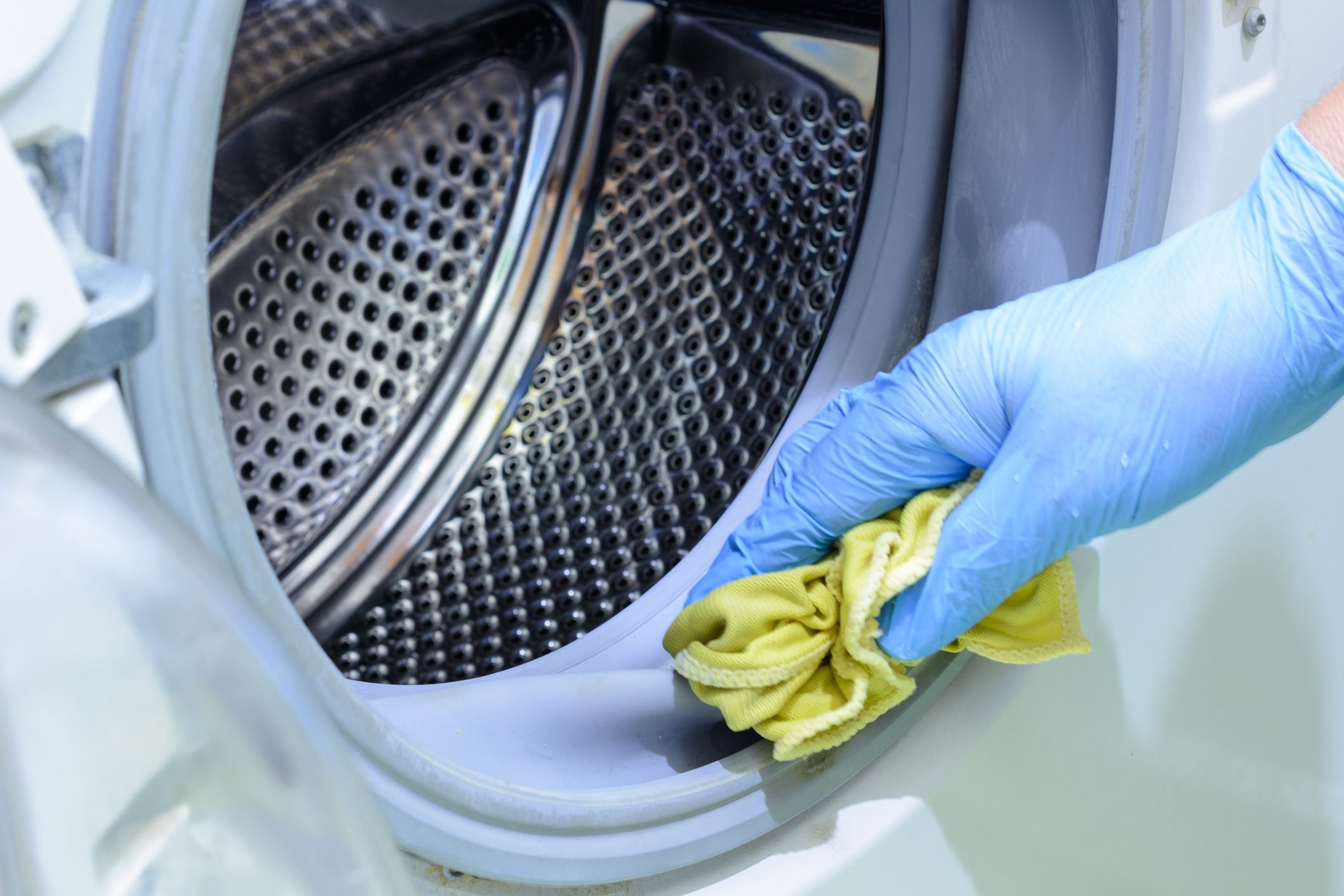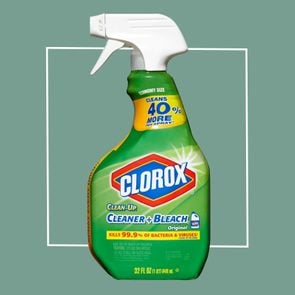Here’s Why You Need to Clean Your Washing Machine—and How to Do It
Updated: Feb. 07, 2023
The moist, warm, dark environment of your washing machine is the perfect breeding ground for mold and germs. Here's how to clean and sterilize your machine, with step-by-step instructions from experts.
Why you should clean your washing machine
For something that does so much cleaning—washing is actually in the name—your washing machine isn’t very clean itself, says Jennifer Ahoni, principal scientist for Tide and senior scientific communications manager at P&G Home Care. The damp, dark environment and constant stream of contaminants brought in from your dirty clothes combine to make the perfect environment for growing mold, fungi, and even bacteria. (That’s just one way your messy house is making you sick.)
Benefits of cleaning your washing machine
There are three main benefits to regularly deep cleaning the machine responsible for cleaning your clothes, says Ahoni.
Kill dangerous germs
Your washing machine cleans clothes, but it doesn’t sanitize them, so any germs that come into the washer can spread to other clothes and the machine itself. The consequences of this range from rashes, allergies, and irritation all the way to life-threatening infections.
One 2019 study published in Applied and Environmental Microbiology identified a washing machine as a reservoir of multidrug-resistant pathogens after it infected newborns in a hospital neonatal intensive care unit with bacteria.
A 2015 study published in Frontiers in Microbiology reported that bacteria found in fecal matter from underwear wasn’t killed by the washing machine. What’s more, the washing process spread the germs around to other clothing. (These are other everyday household objects that may be covered in fecal matter.)
Cleaning and sanitizing your washing machine is how you can both remove and kill these illness-causing bugs.
Remove residue and odors
There’s nothing more frustrating than tossing in a load of dirty clothes only to have them emerge smelling even worse. Mold and fungi thrive in warm, dark, moist environments, making your washing machine their dream house. These can cause health problems, particularly in people who are allergic. But the more common issue is that they can make your clothes smell terrible.
Cleaning your washing machine regularly prevents these toxins from building up and making your laundry reek. “Clean clothes require a clean machine,” Ahoni says.
(Find out if you should reuse sweaty gym clothes.)
Keep your expensive machine in top condition
Washing machines are not cheap, and you want yours to last for years. One way to increase the longevity of your machine is to clean it regularly, says Natalie Barrett, cleaning expert and quality supervisor for Nifty Cleaning Services, a specialty cleaning service. This keeps the machine’s parts in working order and prevents the buildup of soap, dirt, or clothing fibers from gumming it up.
What to know before you clean
Before starting, it’s super important to check the manufacturer’s instructions for cleaning your machine, Ahoni says. Check the user manual or look it up online. Some machines have built-in cleaning cycles, while others require special cleaning solutions.
Cleaning may also depend on the model. For instance, top-loading washers use a different process than front-loading washers. Not following the cleaning instructions can lead to very expensive repairs down the road.
Once you’ve read up on your specific washer, follow the tips from our experts to make sure you’re getting it as clean as possible.
(These are the little things everyone forgets to clean.)
Daily cleaning tips for your washing machine
What you do daily can make a big difference in how much you need to deep clean your washer, Ahoni says. The practices below are a good place to start.
-
Leave the washer door or lid and the dispenser drawer slightly open when not in use. This allows the interior of your machine to dry out and prevents water from building up inside the drum.
-
Remove your clothes as soon as the cycle has finished. Don’t let them sit in the drum any longer than necessary.
-
If you have a high-efficiency machine, make sure to use a high-efficiency or “HE” detergent. High-efficiency laundry detergents are specially formulated to prevent excess suds and residue buildup.
-
Choose the right cycle for your load, as recommended by the machine manufacturer. The amount of water, the temperature of the water, and the length of time needed to cycle can all make a big difference in how clean your clothes get and how clean the washer stays.

Monthly cleaning and disinfecting
Over time, washing machines build up grime and residue from the detergents used. Dirt and germs can also get trapped inside. This makes your washer less efficient at cleaning your clothes and can lead to more cross-contamination, says Diana Rodriguez-Zaba, cleaning specialist certified by the Institute of Inspection, Cleaning, and Restoration and president of ServiceMaster Restoration by Zaba.
This is why it’s so important to both clean (remove germs, dirt, and debris) and sanitize (kill germs) your washing machine. You should be doing this at least once a month, she says.
(Worried about Covid-19? Here’s an A to Z guide on coronavirus cleaning.)
Step 1: Empty the washer
Start by emptying the washer of any clothing, detergent, or other items. (Make sure you pick any pocket change gone rogue out of the barrel.)
Sorry, multitaskers: Because different temperatures and products are needed, you can’t clean clothes and the machine at the same time.
Step 2: Wipe inside and outside
Use a clean, damp cloth to wipe away any obvious dirt, debris, and especially buildup from detergent or fabric softeners. Yes, this includes the chapstick or gum that accidentally went through the wash and melted to the drum. (Hey, it happens to the best of us!)
Barrett suggests adding a cup or two of baking soda—which just happens to be among the best washing machine cleaners. It will work as an abrasive for a more thorough interior scrubbing. (Be careful with this if your machine has a special interior finish.) You can also use glass cleaner on the window of a front-loading machine and a mild cleaning spray on the rest of it, if you like.
Step 3: Clean the rubber gasket
In front-loading machines, the rubber gasket seals around the door to prevent water from coming out. In top-loading machines, you may see a rubber gasket around the top of the drum or the lid. Use a folded paper towel or toothbrush to clean out any gunk that may have gotten in the cracks and folds. This is a place that stinky mold loves to hide, so be thorough, says Barrett.
Step 4: Run a sterilizing cycle
Depending on the make and model of your washing machine, a sterilizing cycle may be a preprogrammed option (in which case, follow the directions) or you may need to do it yourself. Here’s a natural method for a DIY sanitizing cycle:
-
Set the washing machine to the longest and hottest water cycle. Put two cups of baking soda in the drum and turn it on.
-
Set the machine for a second long, hot cycle. Add two to four cups of white vinegar—another on the list of best washing machine cleaners—to the drum and turn it on. Note: If you have stubborn smells, it may help to stop the cycle midway through and allow the vinegar-and-water mixture to sit for a couple of hours before finishing the rinse, Rodriguez-Zaba says.
-
After both cycles have finished, wipe the drum with a clean cloth dipped in vinegar.
A second method for sanitizing your machine is to use a washing machine cleaner. These products, including cleaning tablets, pouches, and powders, are designed specifically for this purpose. They contain antimicrobial chemicals that kill most kinds of viruses and bacteria, Ahoni says.
Follow the directions on the package. For top-loading machines, put the product directly into the drum. For front-loading machines, put the product in the detergent drawer.
(These are the best-reviewed cleaning products on Amazon.)
Make cleaning your washing machine a habit
The secret to having fresh, clean laundry is to have a fresh, clean washing machine. Staying on top of routine cleaning will make this so much easier, as it prevents sticky buildup and stains, says Barrett. Make it a part of your laundry routine and you’ll never again wonder why your freshly laundered sheets smell like sweaty socks.
Next, find out if washing clothes protects against coronavirus.






















